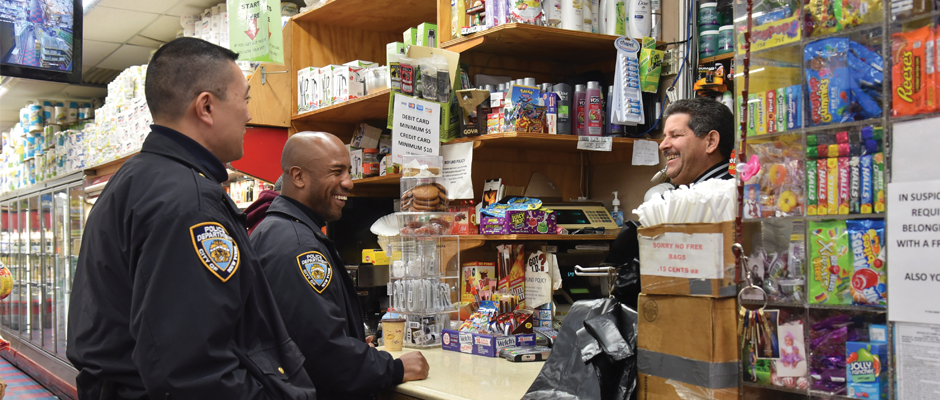This week’s “THANKFUL THURSDAY” would like to commend the New York Police Department’s (NYPD) comprehensive crime-fighting strategy called Neighborhood Policing. This innovative plan is built to improve communication and collaboration between the police officers and the community and ultimately decrease crime. In 2017, the NYPD saw its lowest violent crime numbers in shooting incidents, murder, robberies, and burglaries in decades. With these benchmarks in mind, the NYPD now faces the challenges of sustaining and surpassing that progress for 2018. The NYPD have always encouraged their officers to strengthen the bonds with the communities they patrol, but because of limitations within their local precincts, there was little time or opportunity for true community engagement. The Neighborhood Policing Strategy prioritizes trust building and provides structure for collaborating with the community.
The model divides each precinct into four to five fully staffed sectors within the boundaries of established neighborhoods. The same officers work these same neighborhoods during their assigned shifts which leads to increased familiarity to the local residents. The radio dispatchers, supervisors, and sector officers work together to maintain “sector integrity,” meaning that the sector officers and cars do not leave the boundaries of their assigned sectors, except in precinct-wide emergencies. As part of this strategy, the sector officers are permitted off-radio time to allow them to engage with neighborhood residents, identify local problems, and work toward solutions. Officer’s evolve with their neighborhoods allowing each of them to get to know and feel the responsibility for their sector.
Modern technology has helped in making the sector officers accessible to their communities. All 36,000 officers in the department have cell phones which are used by many of the citizens as a means of contact with their neighborhood officers. Officer’s become integrated into their community and are seen as a resource rather than a reprimanding force.
Within this model and the concept of “shared responsibility” two officers are assigned as neighborhood coordination officers (NCOs). The NCOs are trained to develop community relationships, which makes them accessible to residents, not just in times of distress but as an integral part of their daily lives. The NCOs familiarizes themselves with their community by attending meetings with neighborhood leaders/clergy and regularly visit local schools in their sector. The NCOs also act as adjuncts to the local detective units by responding to crimes in progress and assist in developing leads and evidence. Overall, they feel a sense of belonging and responsibility that fosters a willingness to do whatever it takes to keep the neighborhood safe and secure. According to NYPD Commissioner James O’Neill, “having that shared responsibility with the residents of the city of New York, that’s a great way of being able to maintain violence at a low level.”
Collaboration and understanding are two major components of Humankind Alliance’s initiatives and NYPD’s Neighborhood Policing is a shining example of these two values in action. Modern times call for modern policing and we commend Commissioner O’Neill and everyone at NYPD for their creativity and forward-thinking approach. It requires all of us coming together with “shared responsibility” to truly solve the most pressing issues we face as a Nation.
For more information, please see the links below.
https://www1.nyc.gov/site/nypd/bureaus/patrol/neighborhood-coordination-officers.page
https://www.cbsnews.com/news/nypd-community-policing-lower-crime/
